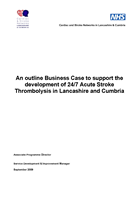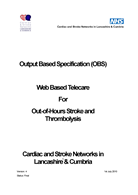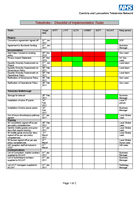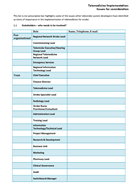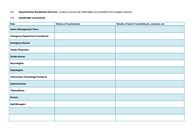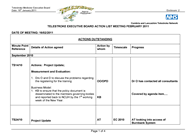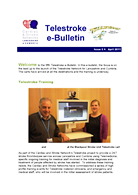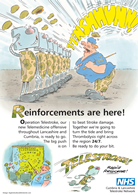Section 1: Telestroke Needs Assessment
Guidelines suggest that telemedicine should be adopted to eliminate geographical disparities in care, but there is little guidance on what sort of telemedicine system should be deployed. Multidisciplinary representation from key stakeholder groups should be included from the beginning.1
Research identifies that development of a telestroke system involves a large number of stakeholders across organisational and professional boundaries and suggests that telemedicine system development can be hampered by lack of alignment with strategic vision and existing business processes. Formal collaboration and good communication is needed for the negotiation of complex inter-organisational issues. There needs to be a sustainable, long-term business model for investments, expenses and rewards across participating organisations. 3,4
| Other telestroke projects detail the implementation tasks and resources to: | Lessons learned from the case study include: |
|---|---|
| 1.1 Develop a business case for telestroke | Procuring a telemedicine system Write a plain language specification and involve Procurement early. |
| 1.2 Develop a service and system specification for telestroke | |
| 1.3 Involve key individuals in the telemedicine implementation | Developing consensus for telemedicine in stroke Use a Project Manager, and don’t under-estimate the work needed to ensure everyone is involved. |
| 1.4 Formalise communication and agreement for telemedicine implementation | Developing communication routes for telemedicine implementation Actively manage balanced levels of involvement across organisations. Agree roles and responsibilities for communication. Getting agreement for telemedicine in stroke Formalise job planning agreements early with organisational leads, operational management, and clinicians. Agreeing the finances for telemedicine in stroke Confirm financial agreements in writing at the outset. |
1.1 Develop a business case
Assessment of need for telestroke should include an assessment of the geography of the area, population need, capability and capacity in both the telestroke provider and the patient referral sites, and organisational/staff interest.2
1.2 Develop a service and system specification
The telestroke model adopted needs to be suitable for geographical distribution and travel distances, predicted volume of requests, and service capacities.2
Lessons learned from the case study:
1.3 Involve key individuals
Efforts to engage all key individuals need to take account of the strategic vision and existing business processes of the participating organisations.3 Enrol support for telestroke from general business functions within the host organisations i.e. IT, R&D, business unit, public relations, etc. 3, 4
Lessons learned from the case study:
1.4. Formalise communication and agreement
Good inter-organisational communication routes are needed for complicated issues like contacts, legal agreements, equipment installation, and staff training etc. 3, 4, 7 A newsletter might be a useful mechanism for maintaining communication between sites. 2
Lessons learned from the case study:

